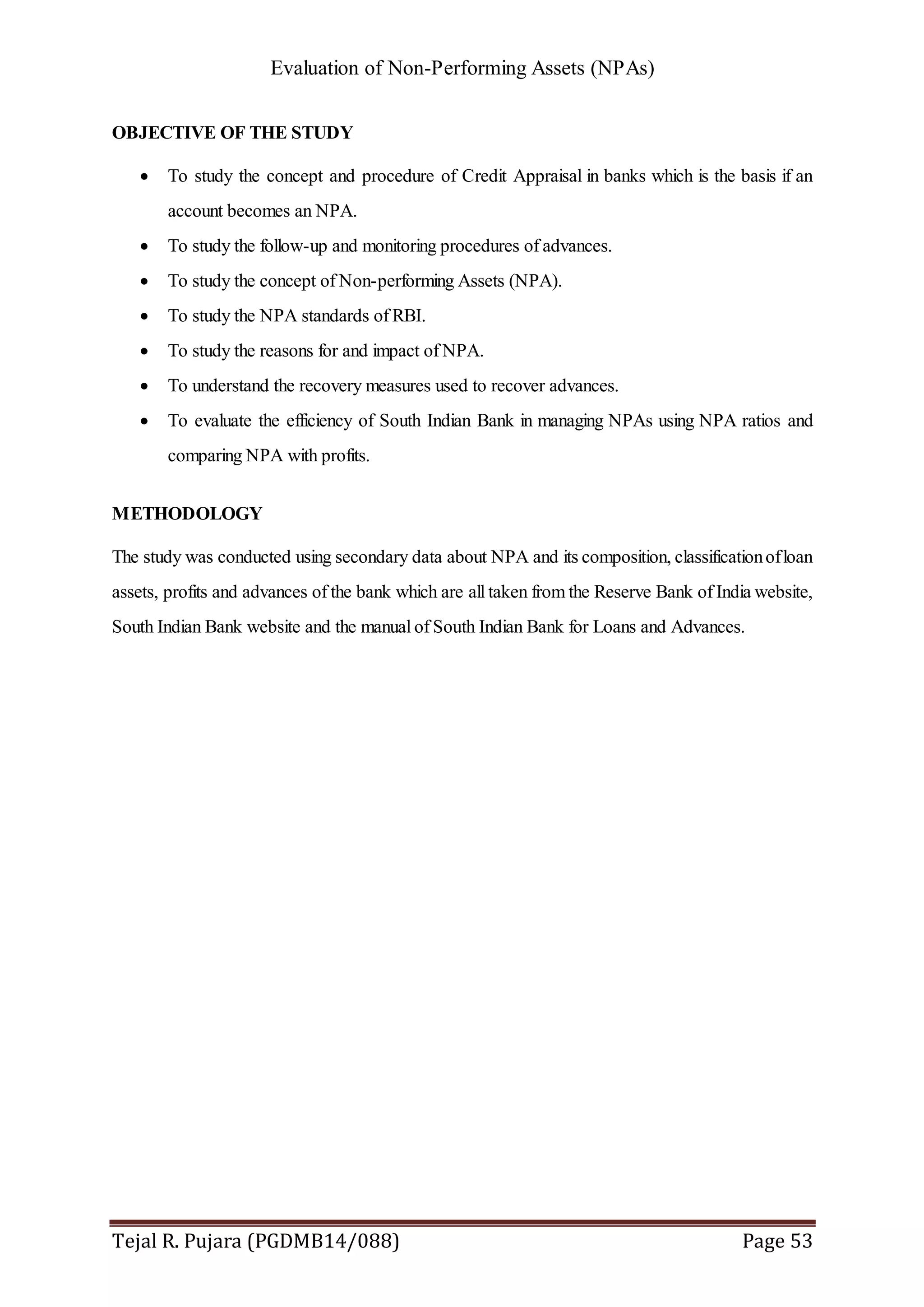This document provides an evaluation of non-performing assets (NPAs) at the George Town branch of South Indian Bank in Chennai. It begins with an introduction to South Indian Bank and the George Town branch. The document then covers credit appraisal processes, monitoring and recovery of loans, definitions and types of NPAs, RBI guidelines on NPA classification and provisioning, causes and impacts of NPAs, and preventive and recovery measures for NPAs. The objective of the study is to analyze NPAs at South Indian Bank and the methodology used to conduct the analysis.





































































